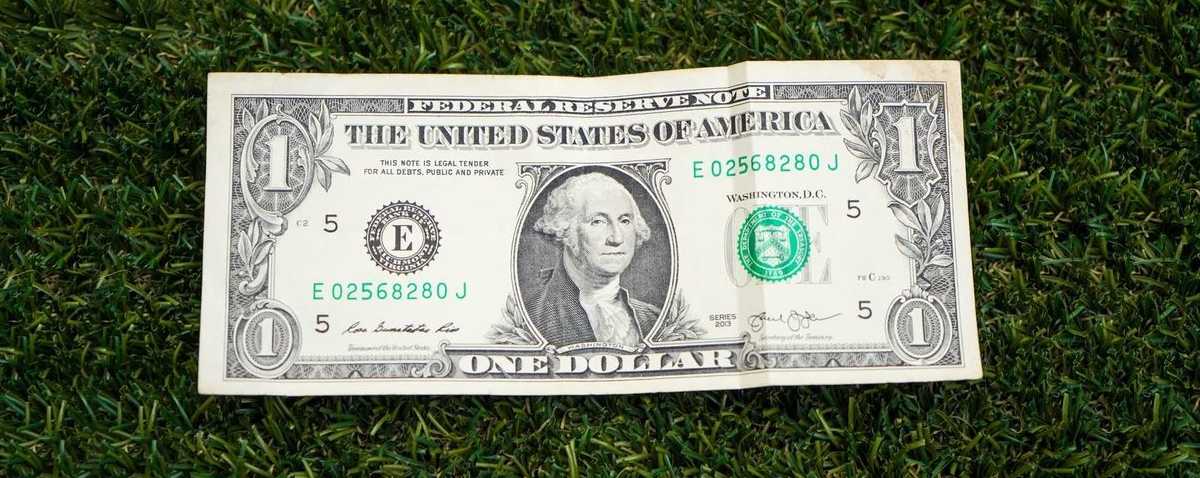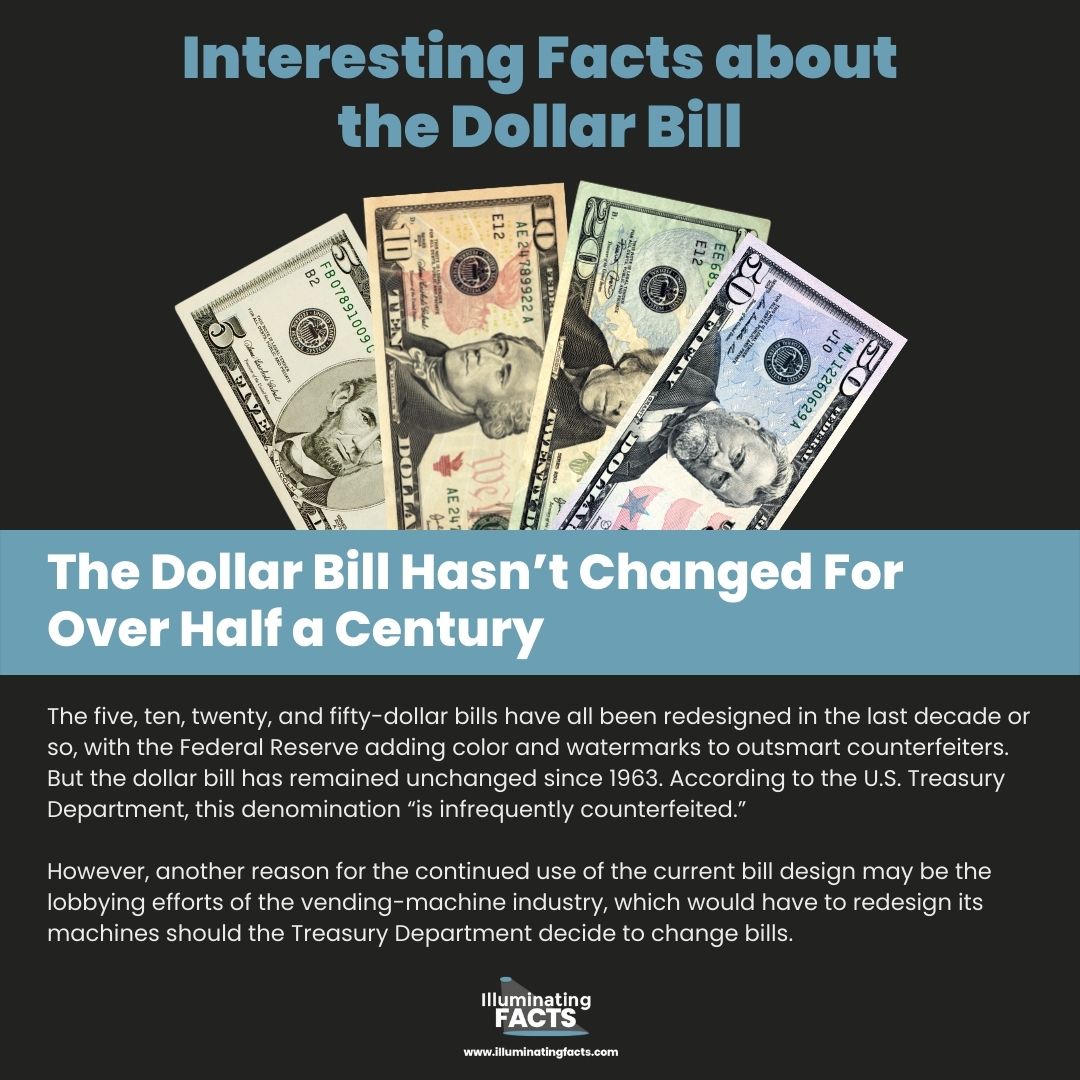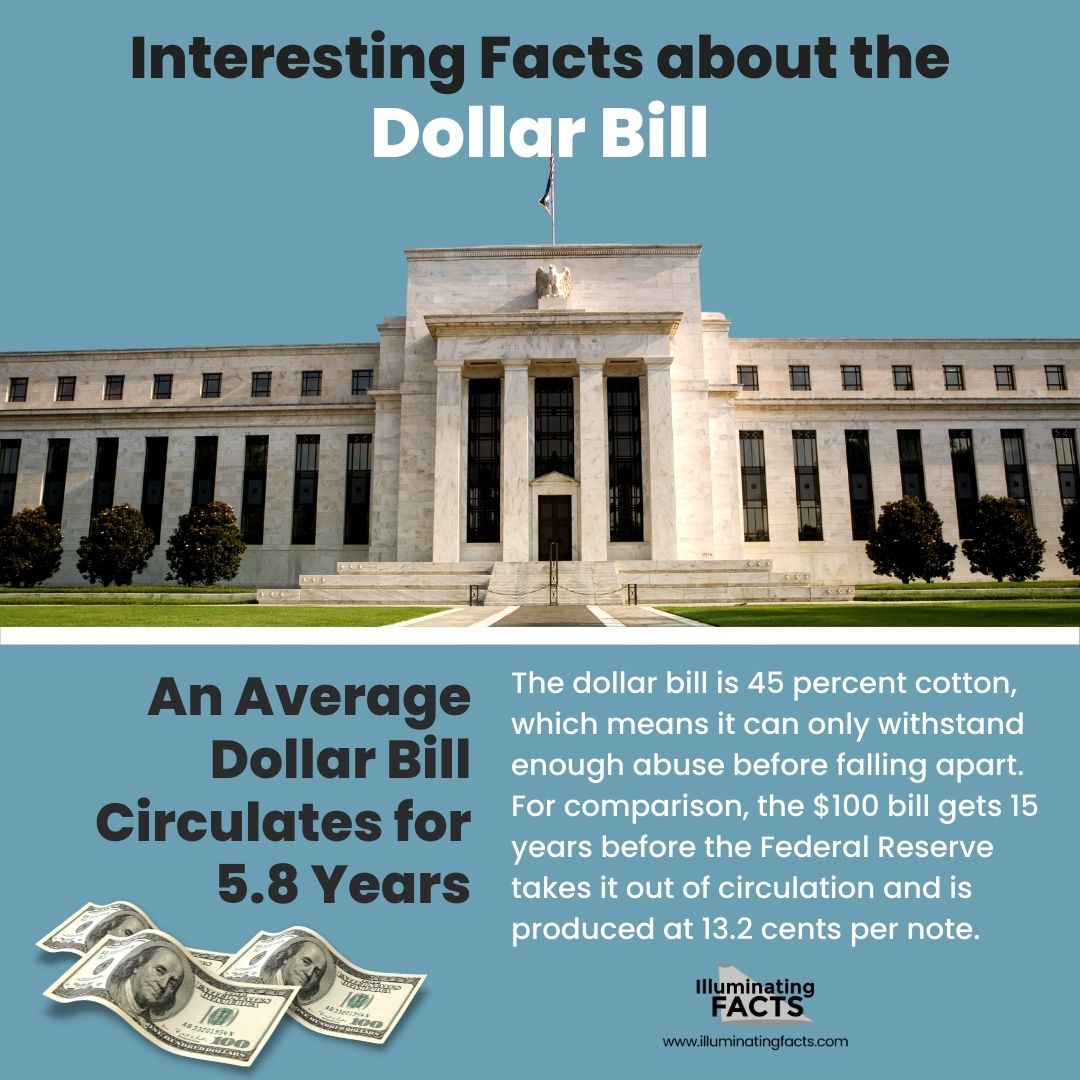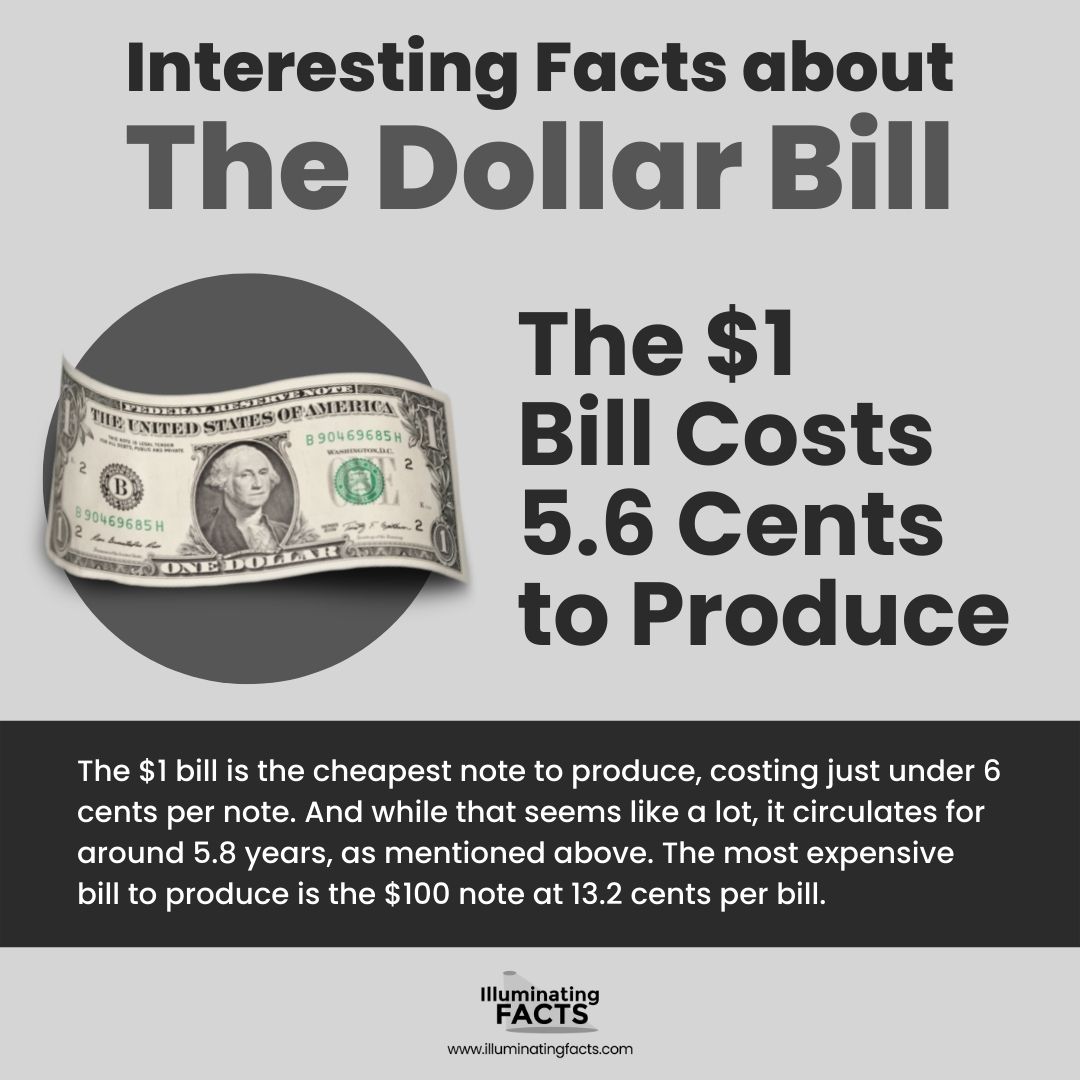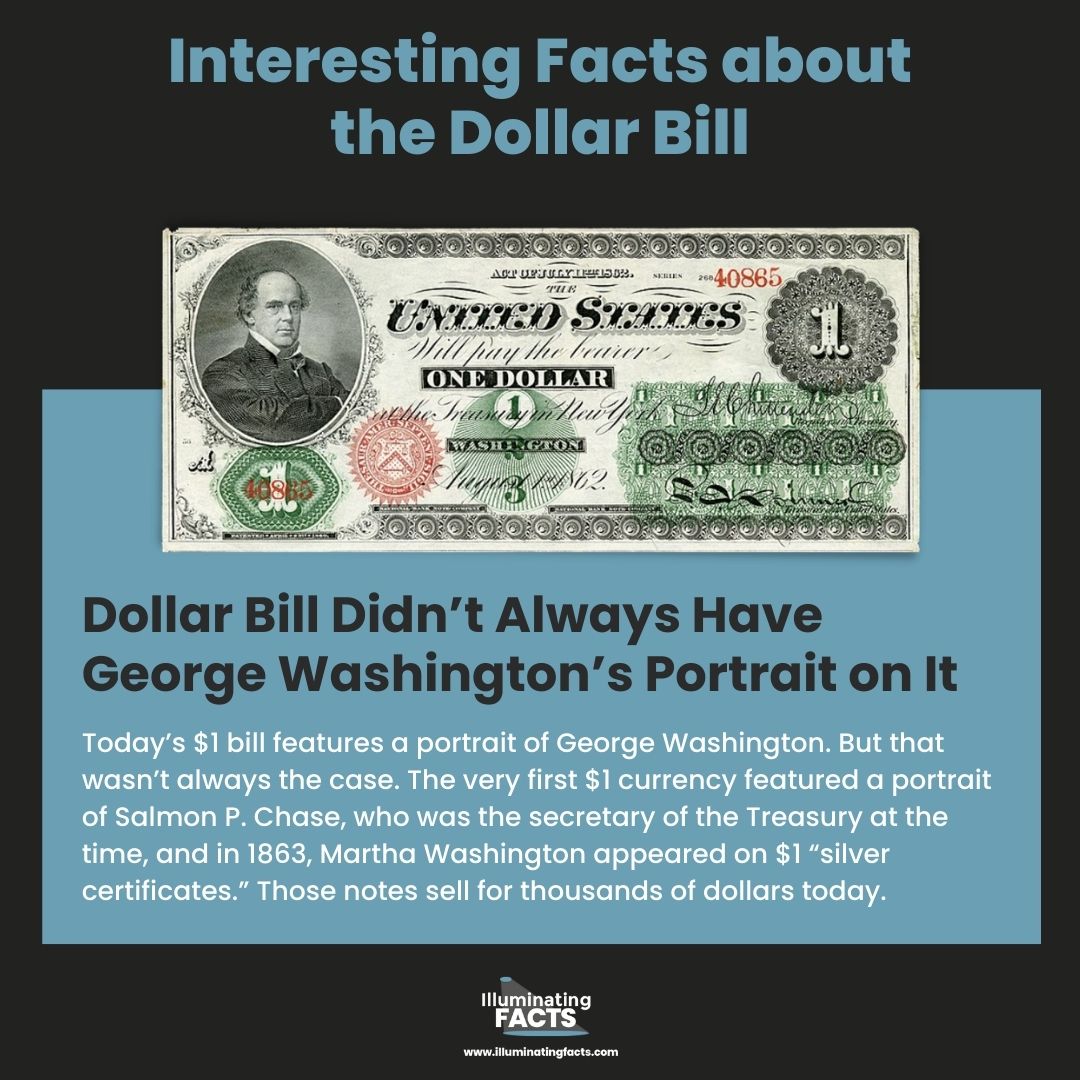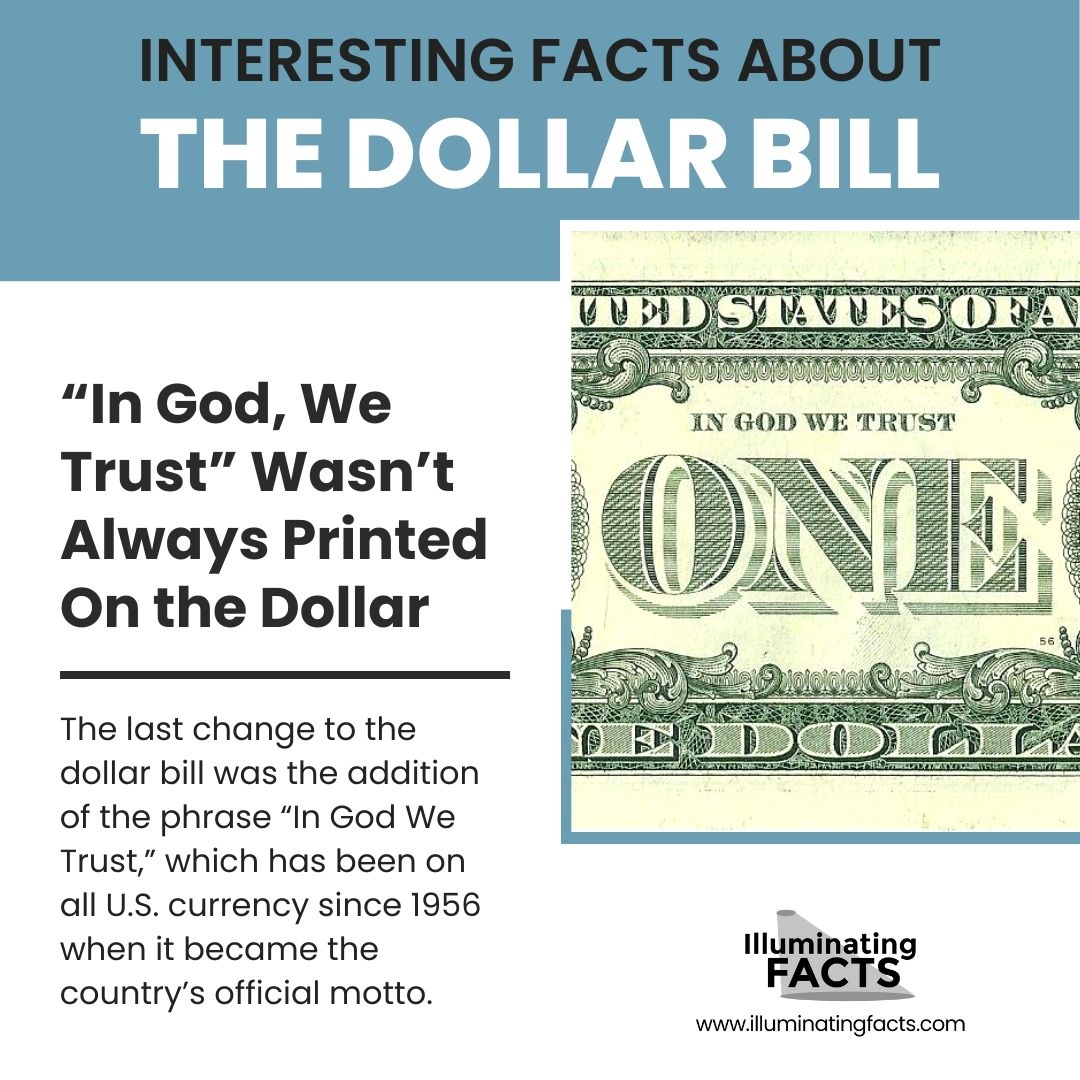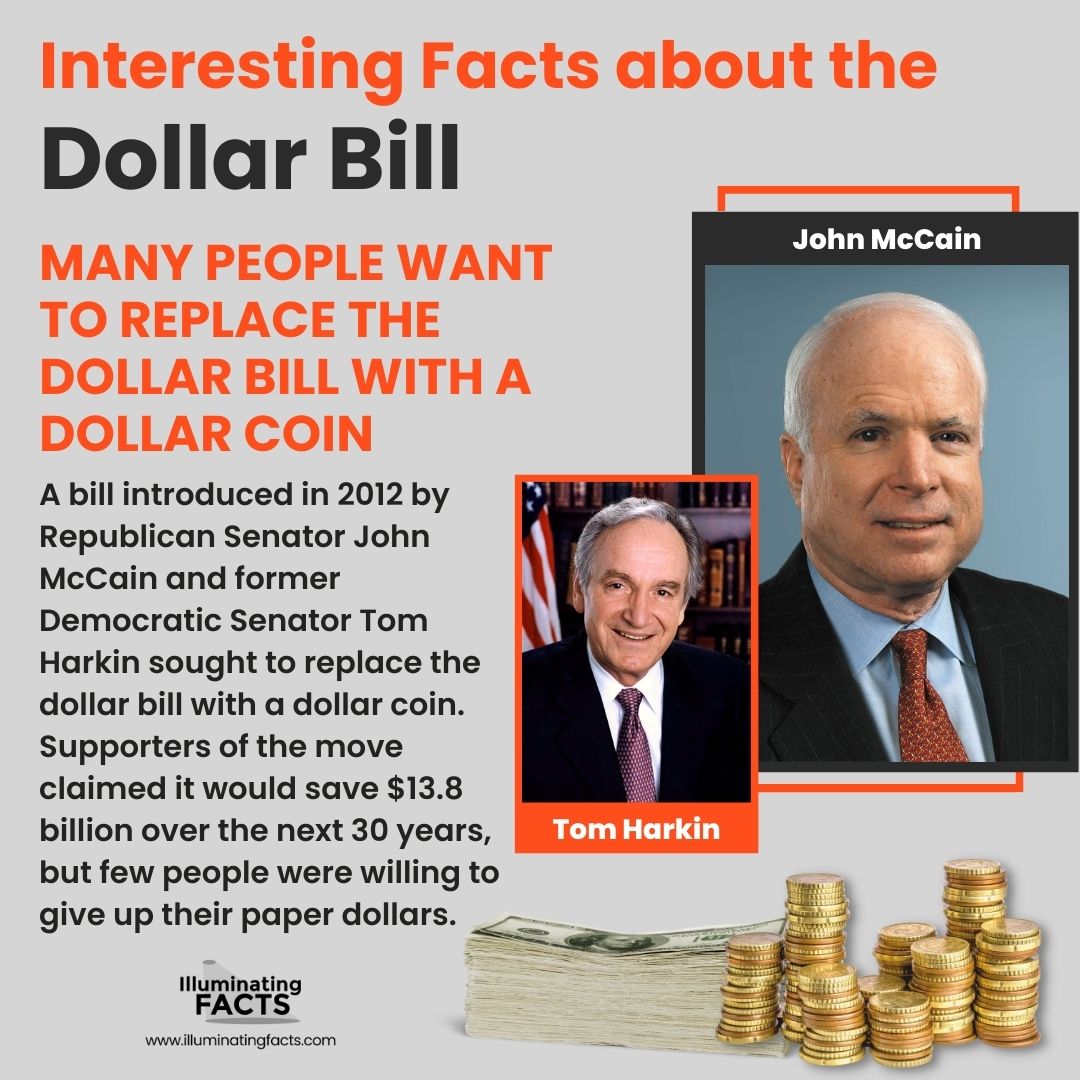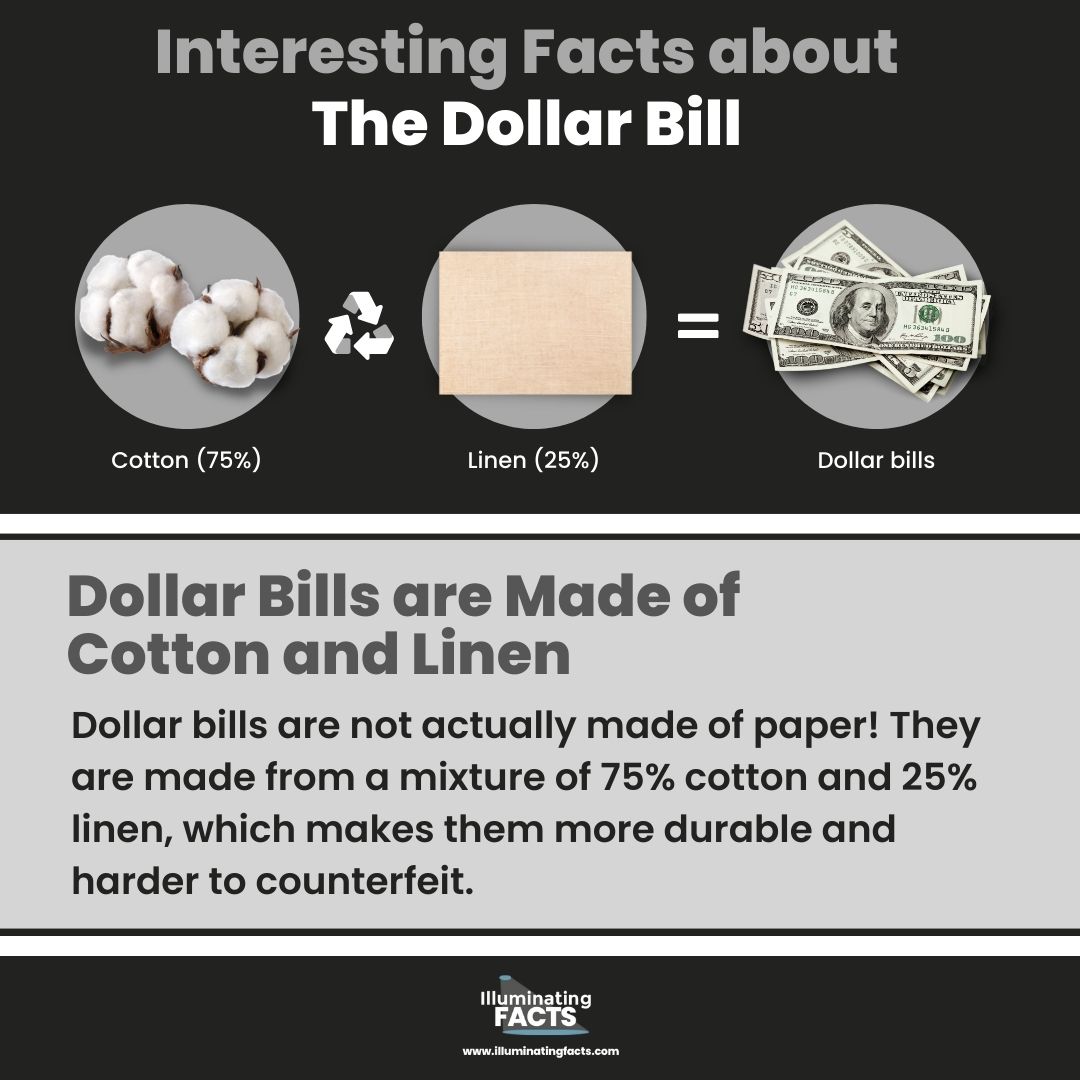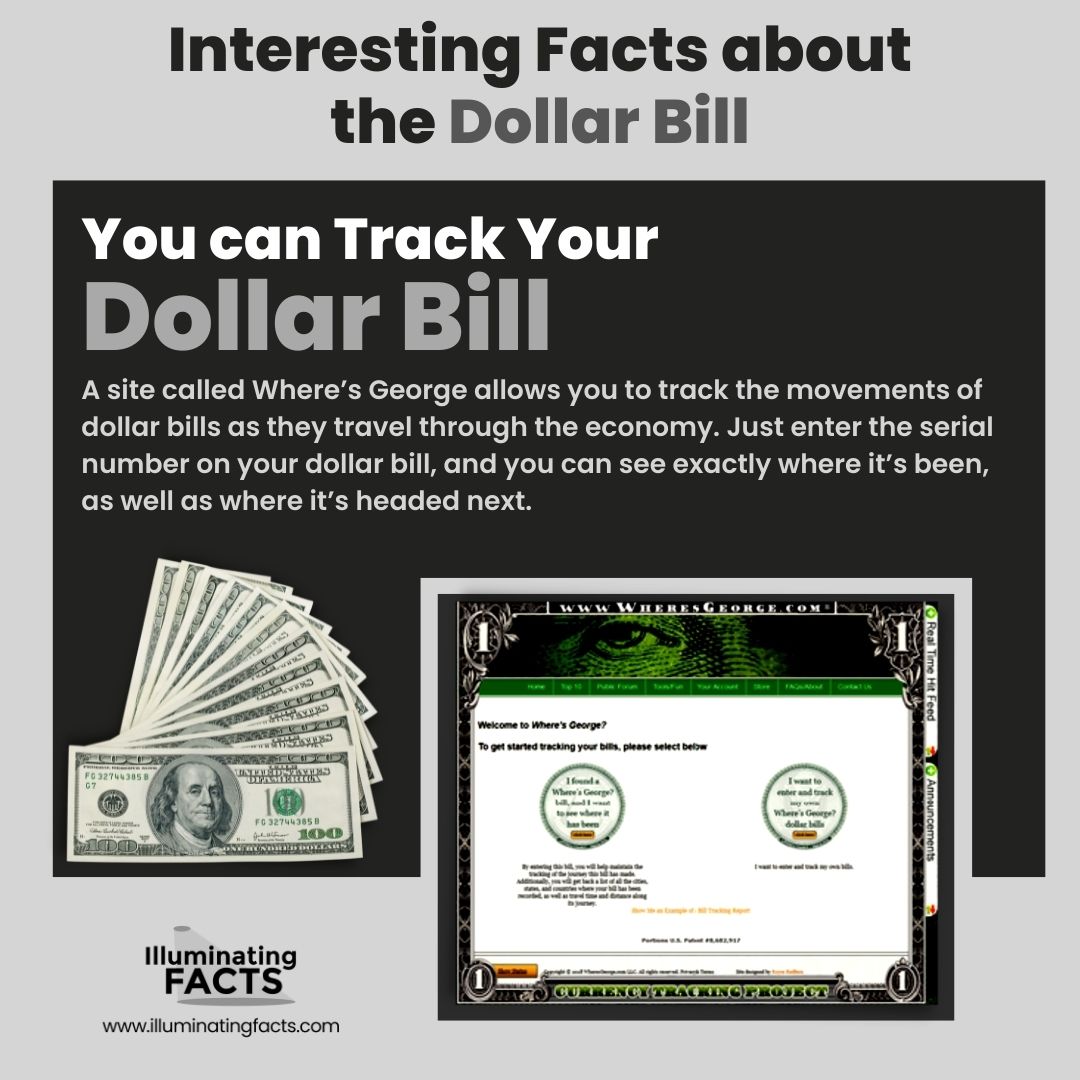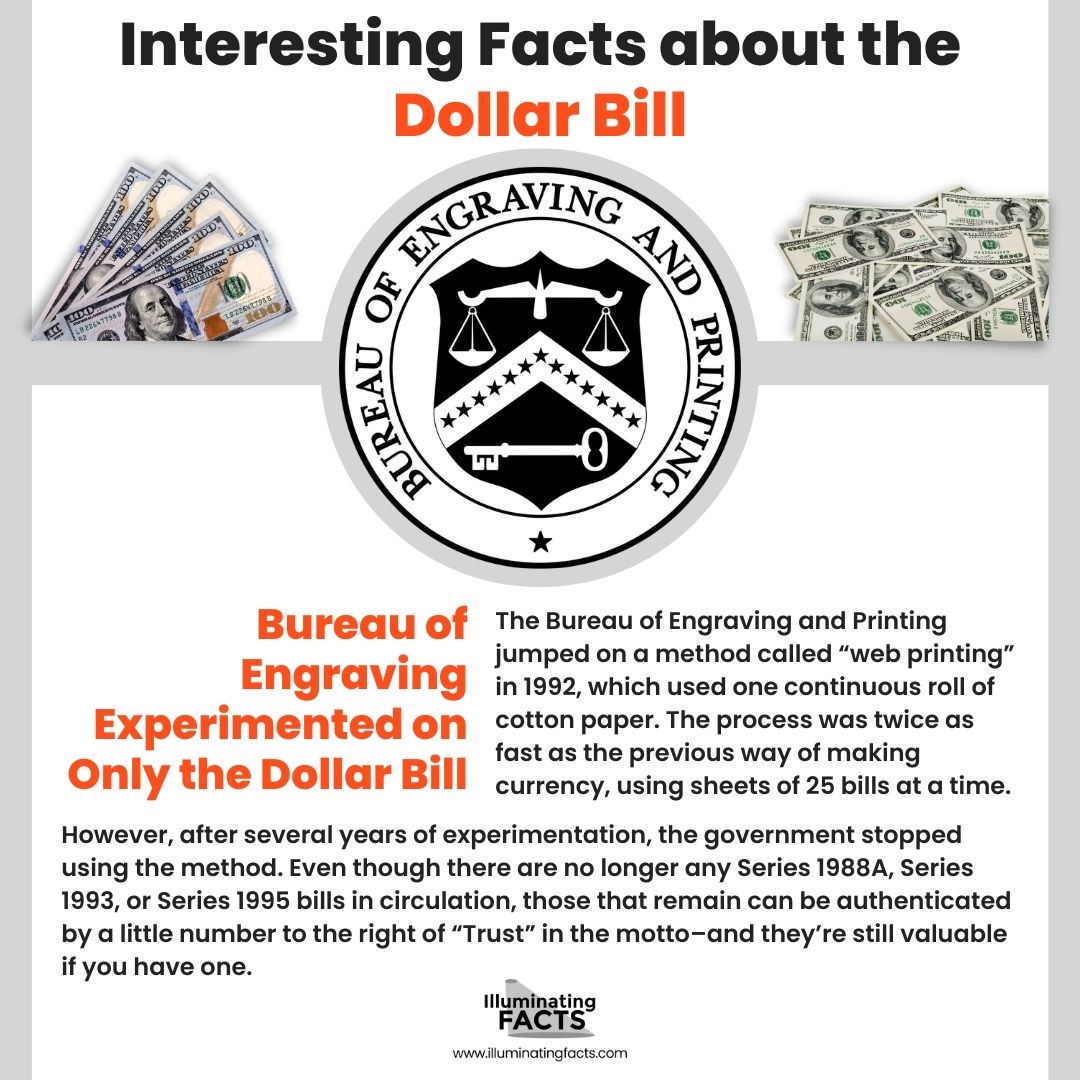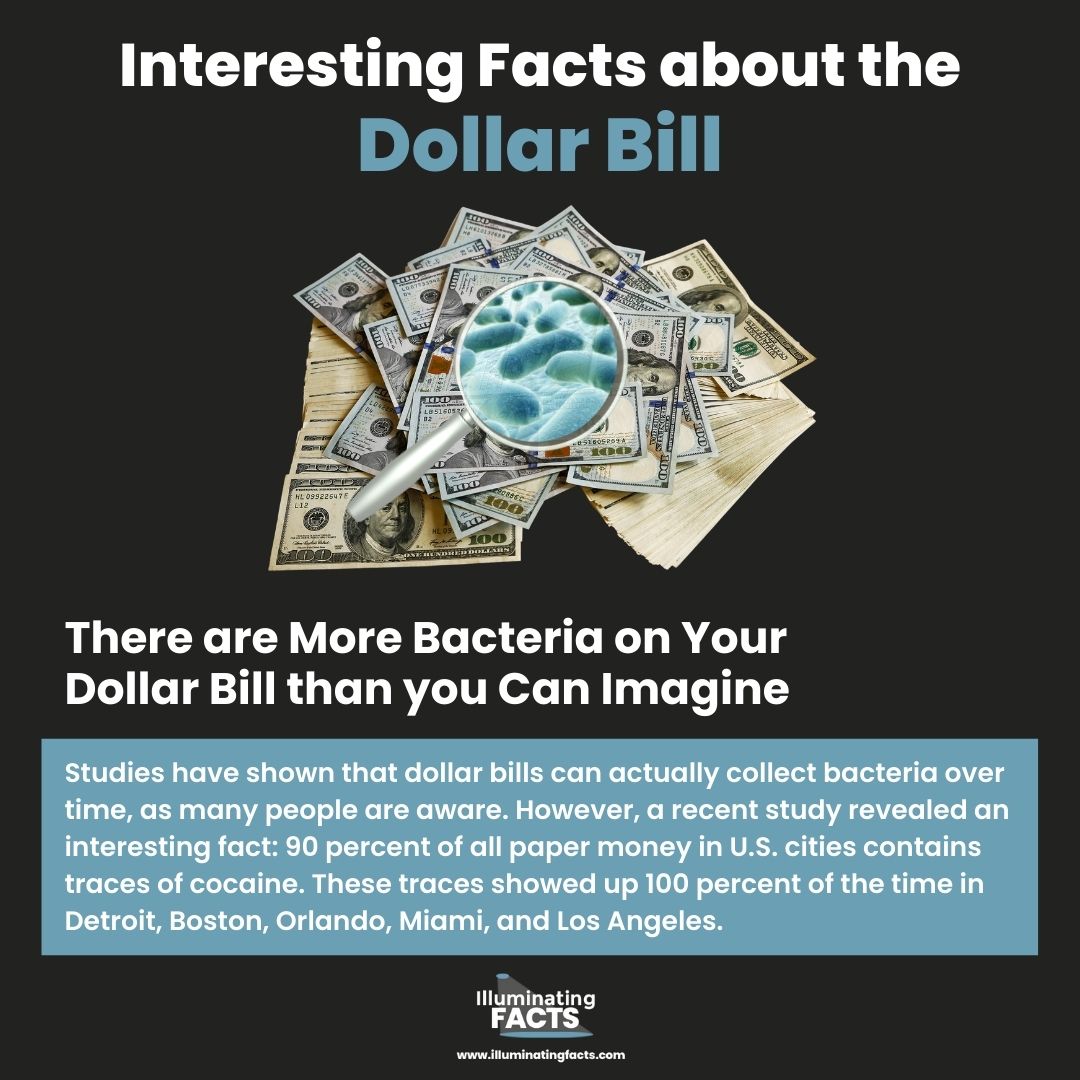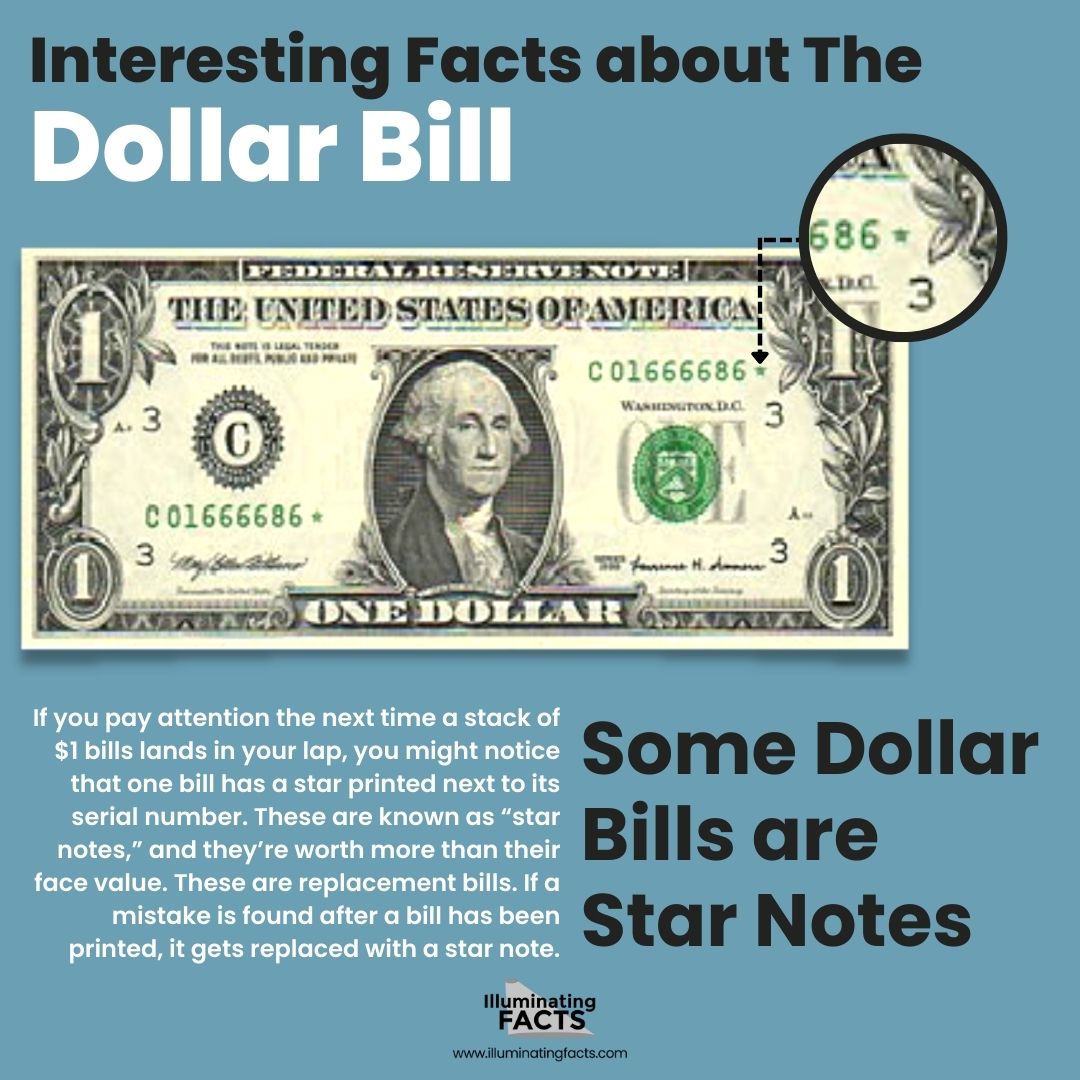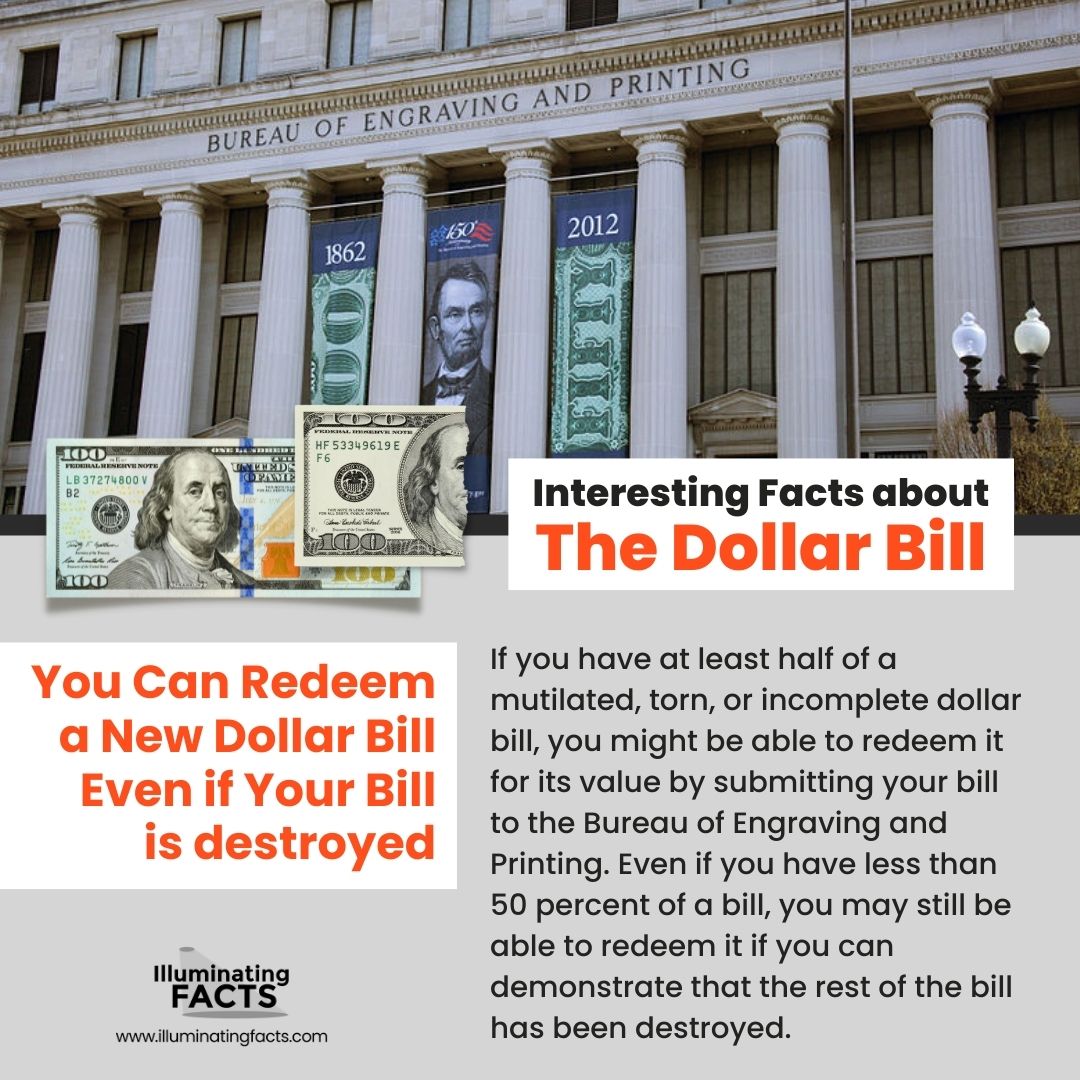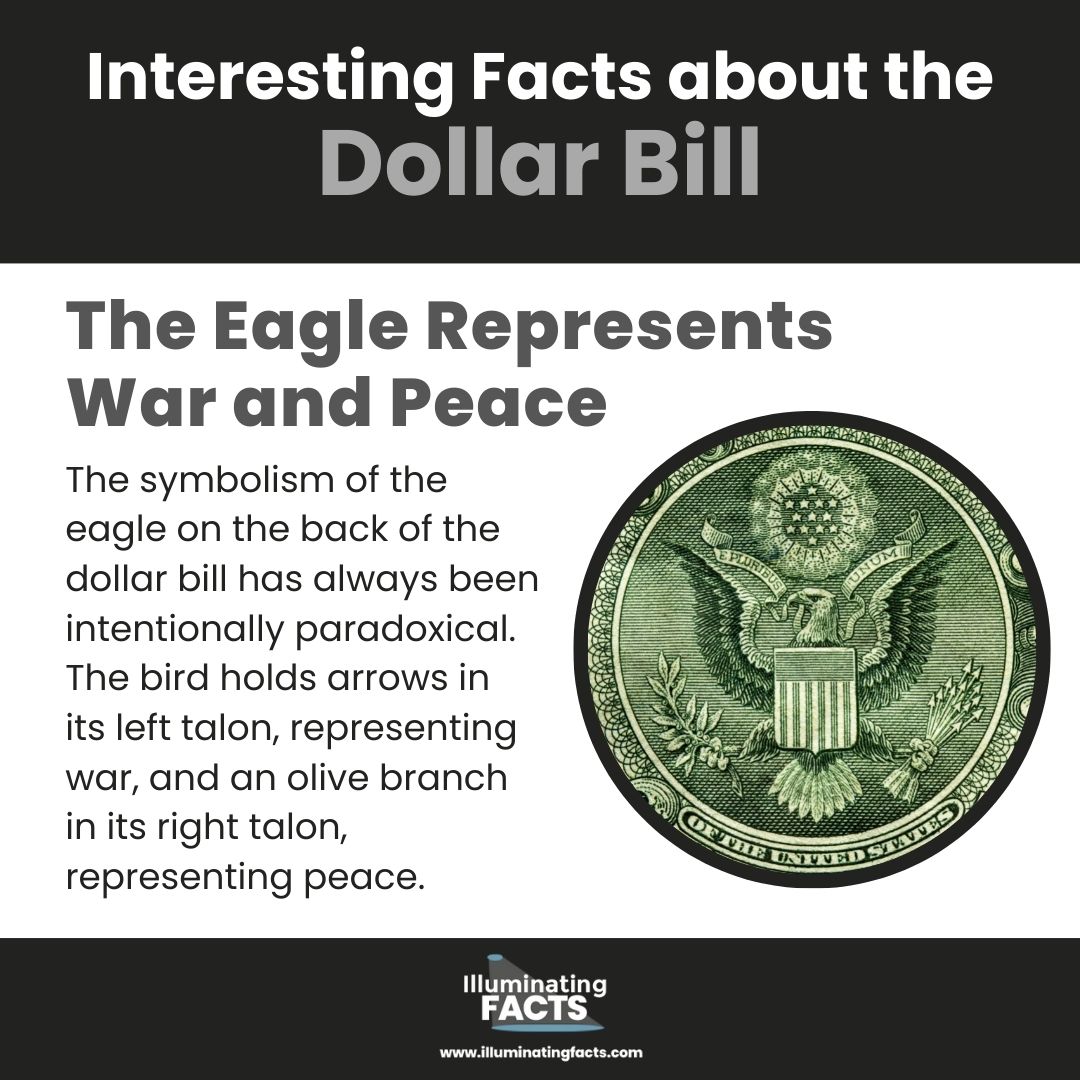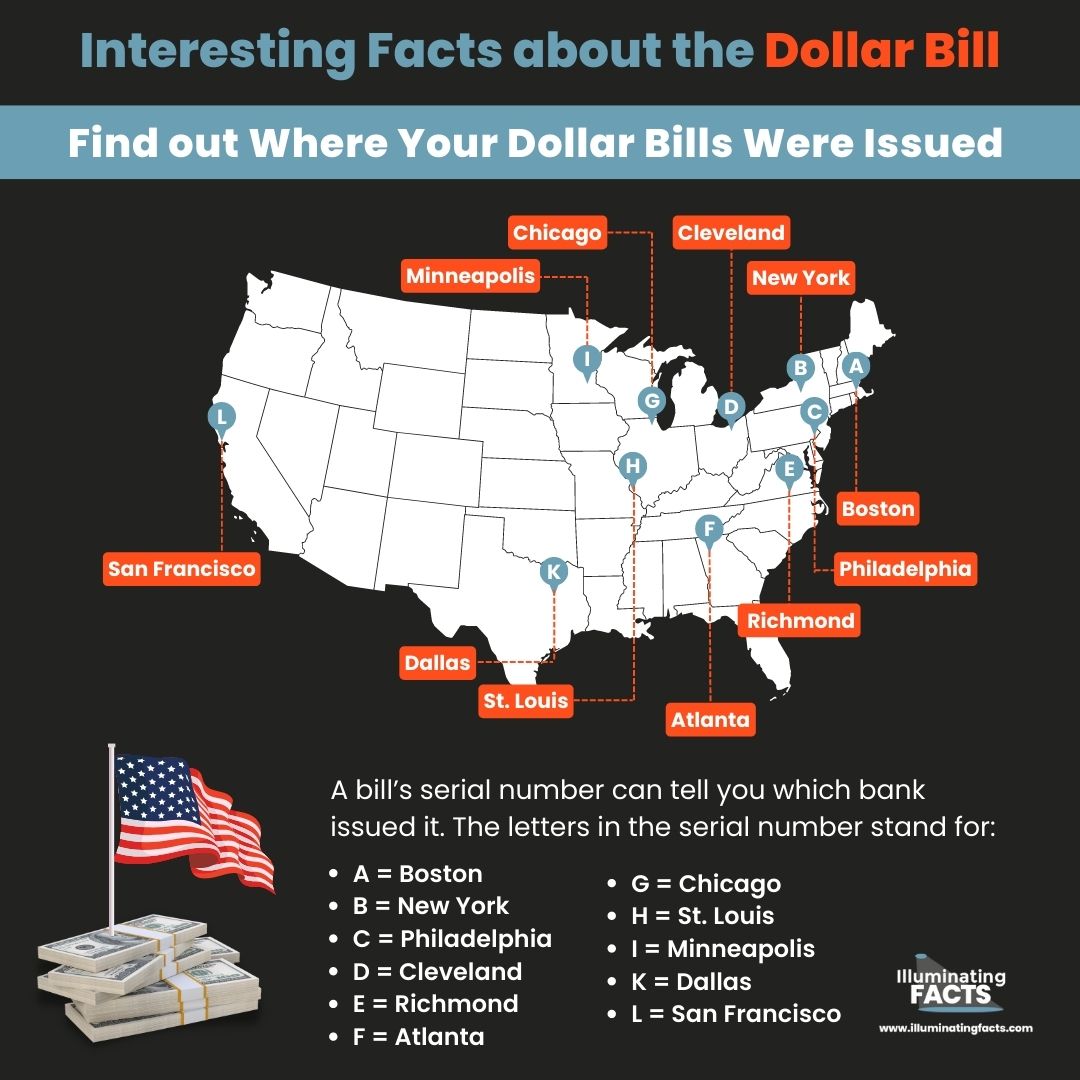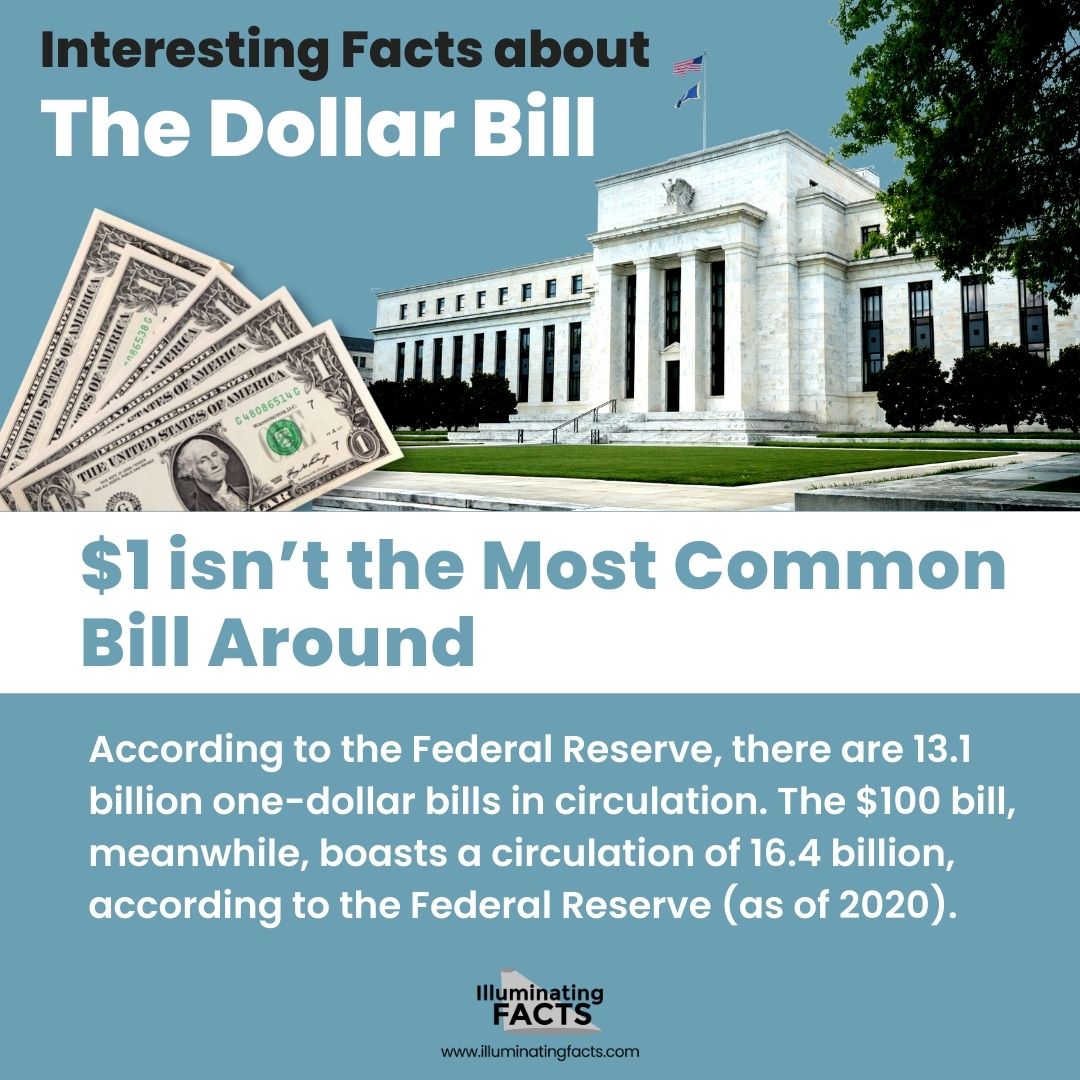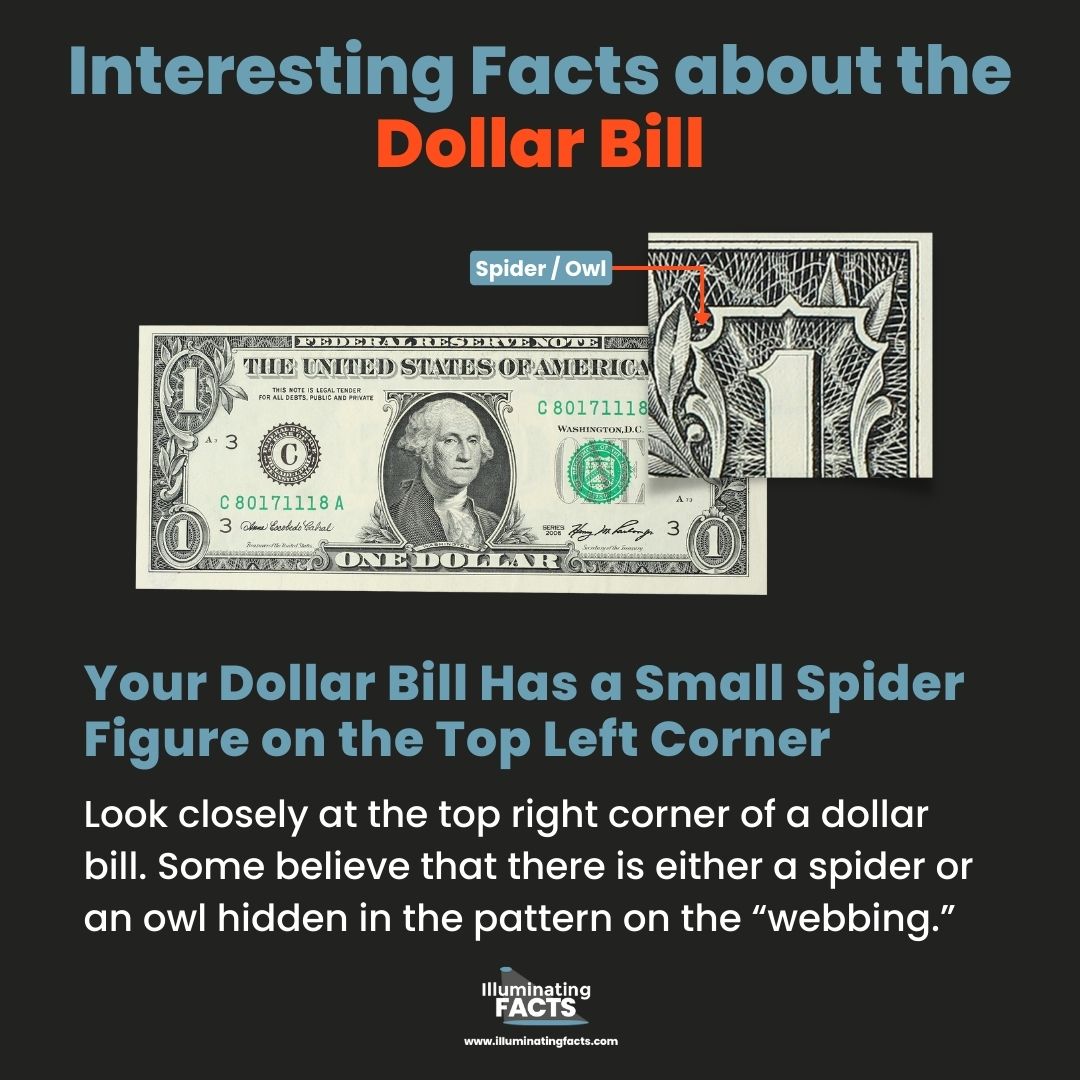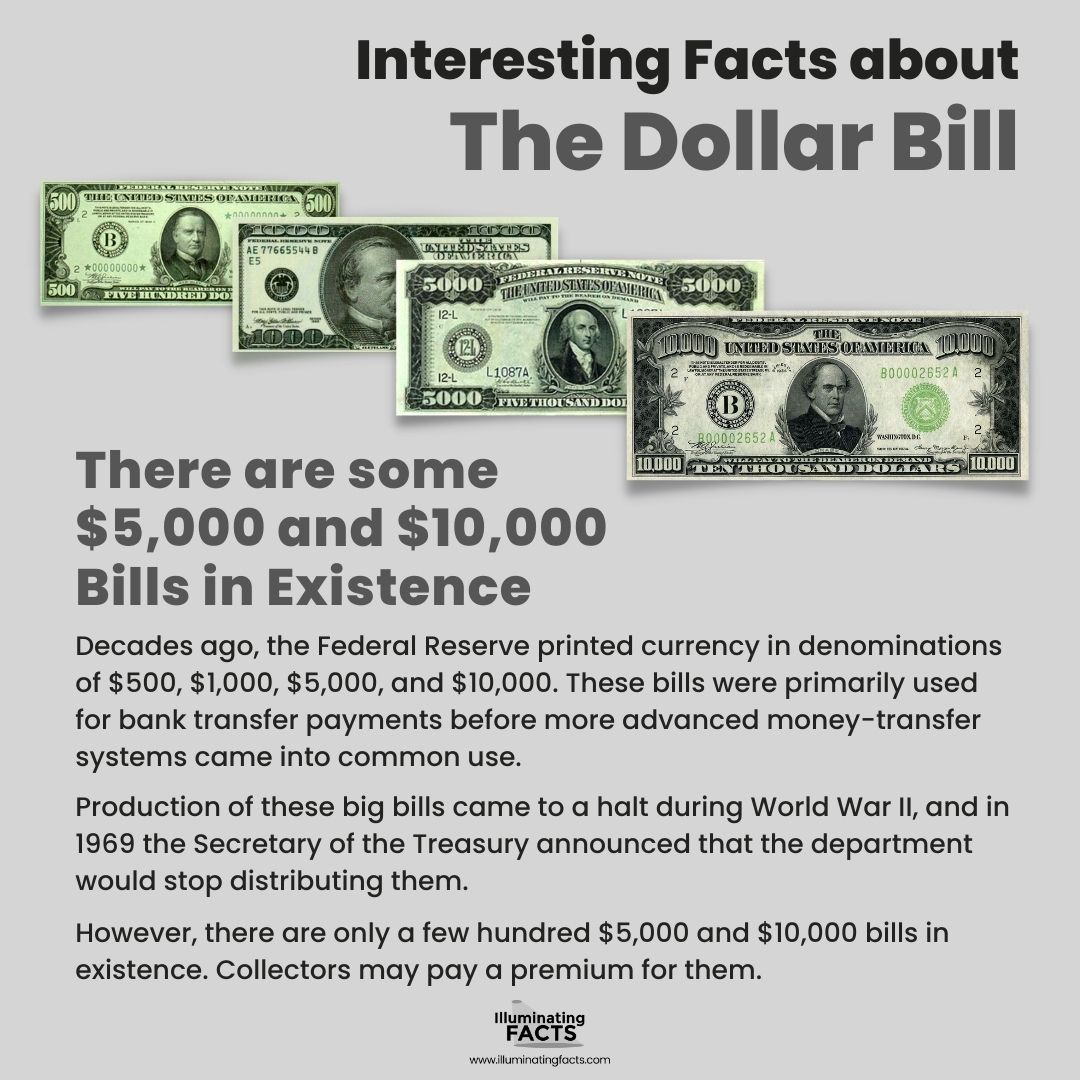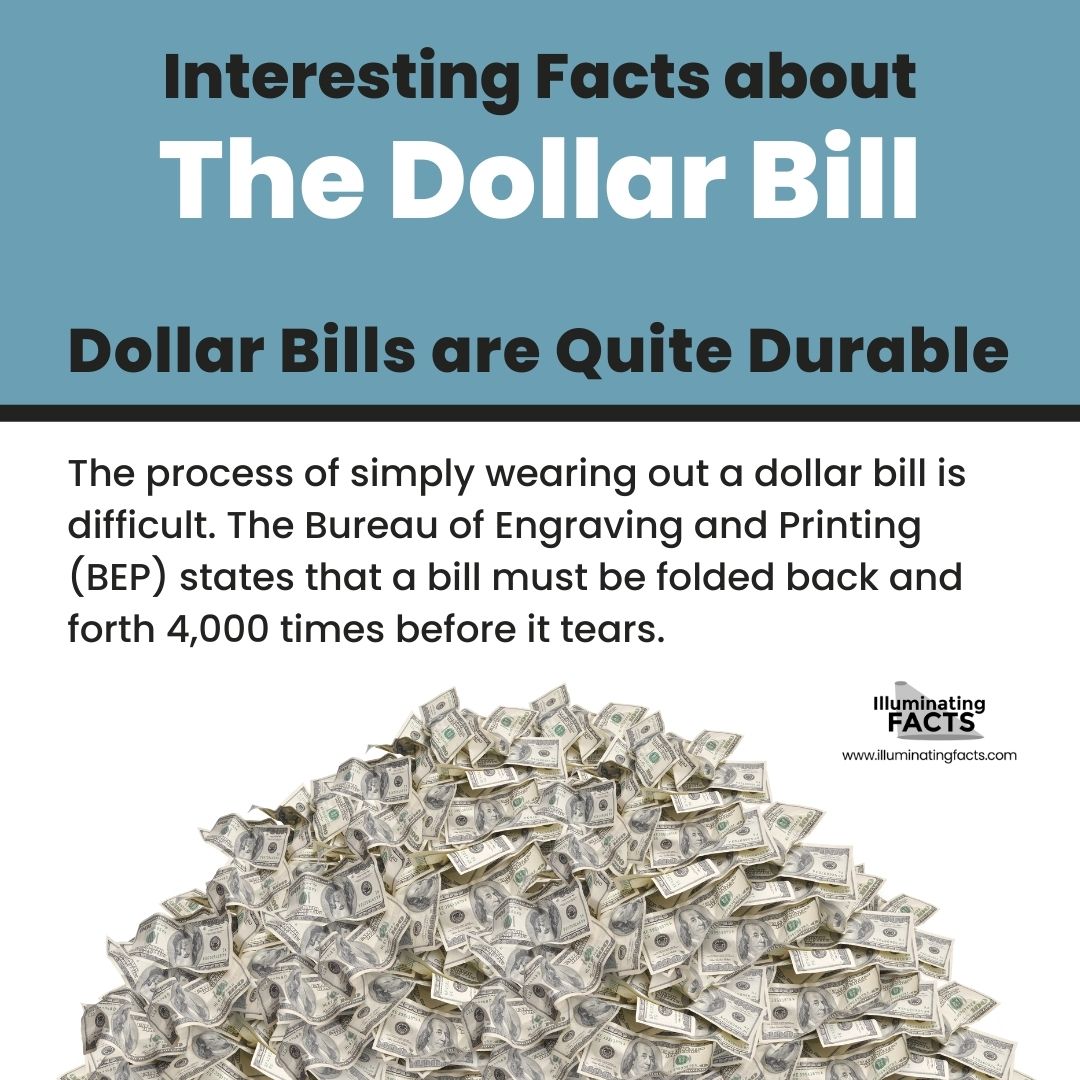The $1 bill, with its portrait of George Washington and the pyramid and eagle, is one of the most recognizable items in circulation. But while we’ve used this currency since we began receiving an allowance, there are still many facts about $1 bills that many of us don’t know. Let’s talk about them now!
1. The Dollar Bill Hasn’t Changed For Over Half a Century
The five, ten, twenty, and fifty-dollar bills have all been redesigned in the last decade or so, with the Federal Reserve adding color and watermarks to outsmart counterfeiters. But the dollar bill has remained unchanged since 1963. According to the U.S. Treasury Department, this denomination “is infrequently counterfeited.”
However, another reason for the continued use of the current bill design may be the lobbying efforts of the vending-machine industry, which would have to redesign its machines should the Treasury Department decide to change bills.
2. An Average Dollar Bill Circulates for 5.8 Years
The dollar bill is 45 percent cotton, which means it can only withstand enough abuse before falling apart. For comparison, the $100 bill gets 15 years before the Federal Reserve takes it out of circulation and is produced at 13.2 cents per note. [1]
3. The $1 Bill Costs 5.6 Cents to Produce
The $1 bill is the cheapest note to produce, costing just under 6 cents per note. And while that seems like a lot, it circulates for around 5.8 years, as mentioned above. The most expensive bill to produce is the $100 note at 13.2 cents per bill. [2]
4. Dollar Bill Didn’t Always Have George Washington’s Portrait on It
Today’s $1 bill features a portrait of George Washington. But that wasn’t always the case. The very first $1 currency featured a portrait of Salmon P. Chase, who was the secretary of the Treasury at the time, and in 1863, Martha Washington appeared on $1 “silver certificates.” Those notes sell for thousands of dollars today. [3]
5. “In God, We Trust” Wasn’t Always Printed On the Dollar
The last change to the dollar bill was the addition of the phrase “In God We Trust,” which has been on all U.S. currency since 1956 when it became the country’s official motto.
6. Many People Want to Replace the Dollar Bill with a Dollar Coin
A bill introduced in 2012 by Republican Senator John McCain and former Democratic Senator Tom Harkin sought to replace the dollar bill with a dollar coin. Supporters of the move claimed it would save $13.8 billion over the next 30 years, but few people were willing to give up their paper dollars. [4]
7. Dollar Bills are Made of Cotton and Linen
Dollar bills are not actually made of paper! They are made from a mixture of 75% cotton and 25% linen, which makes them more durable and harder to counterfeit.
8. Hidden Message behind the Pyramid
The pyramid on the U.S. dollar bill has 13 steps to represent the original colonies. The fact that it is unfinished symbolizes that our country can always be improved. The U.S. dollar bill also contains symbols representing the 13 original colonies. There are 13 stripes on the Great Seal and 13 stars. Also, the eagle on the back of your $1 bill holds 13 arrows in its left talon.
9. You can Track Your Dollar Bill
A site called Where’s George allows you to track the movements of dollar bills as they travel through the economy. Just enter the serial number on your dollar bill, and you can see exactly where it’s been, as well as where it’s headed next.
10. Bureau of Engraving Experimented on Only the Dollar Bill
The Bureau of Engraving and Printing jumped on a method called “web printing” in 1992, which used one continuous roll of cotton paper. The process was twice as fast as the previous way of making currency, using sheets of 25 bills at a time.
However, after several years of experimentation, the government stopped using the method. Even though there are no longer any Series 1988A, Series 1993, or Series 1995 bills in circulation, those that remain can be authenticated by a little number to the right of “Trust” in the motto–and they’re still valuable if you have one.
11. There are More Bacteria on Your Dollar Bill than you Can Imagine
Studies have shown that dollar bills can actually collect bacteria over time, as many people are aware. However, a recent study revealed an interesting fact: 90 percent of all paper money in U.S. cities contains traces of cocaine. These traces showed up 100 percent of the time in Detroit, Boston, Orlando, Miami, and Los Angeles. [5]
12. Some Dollar Bills are Star Notes
If you pay attention the next time a stack of $1 bills lands in your lap, you might notice that one bill has a star printed next to its serial number. These are known as “star notes,” and they’re worth more than their face value. These are replacement bills. If a mistake is found after a bill has been printed, it gets replaced with a star note.
13. You Can Redeem a New Dollar Bill Even if Your Bill is destroyed
If you have at least half of a mutilated, torn, or incomplete dollar bill, you might be able to redeem it for its value by submitting your bill to the Bureau of Engraving and Printing. Even if you have less than 50 percent of a bill, you may still be able to redeem it if you can demonstrate that the rest of the bill has been destroyed. [6]
14. The Eagle Represents War and Peace
The symbolism of the eagle on the back of the dollar bill has always been intentionally paradoxical. The bird holds arrows in its left talon, representing war, and an olive branch in its right talon, representing peace.
15. Find out Where Your Dollar Bills Were Issued
A bill’s serial number can tell you which bank issued it. The letters in the serial number stand for:
- A = Boston
- B = New York
- C = Philadelphia
- D = Cleveland
- E = Richmond
- F = Atlanta
- G = Chicago
- H = St. Louis
- I = Minneapolis
- K = Dallas
- L = San Francisco
16. $1 isn’t the Most Common Bill Around
According to the Federal Reserve, there are 13.1 billion one-dollar bills in circulation. The $100 bill, meanwhile, boasts a circulation of 16.4 billion, according to the Federal Reserve (as of 2020). [7]
17. Your Dollar Bill Has a Small Spider Figure on the Top Left Corner
Look closely at the top right corner of a dollar bill. Some believe that there is either a spider or an owl hidden in the pattern on the “webbing.”
18. There are some $5,000 and $10,000 Bills in Existence
Decades ago, the Federal Reserve printed currency in denominations of $500, $1,000, $5,000, and $10,000. These bills were primarily used for bank transfer payments before more advanced money-transfer systems came into common use.
Production of these big bills came to a halt during World War II, and in 1969 the Secretary of the Treasury announced that the department would stop distributing them.
However, there are only a few hundred $5,000 and $10,000 bills in existence. Collectors may pay a premium for them.
19. Your House Might be Made of Money
You may not realize it, but you’re surrounded by old dollar bills. When worn-out bills fall out of circulation, they’re shredded by the Federal Reserve. The Fed then sells the shredded bills to companies that use them for insulation and other building materials.
20. Dollar Bills are Quite Durable
The process of simply wearing out a dollar bill is difficult. The Bureau of Engraving and Printing (BEP) states that a bill must be folded back and forth 4,000 times before it tears. [8]
Conclusion
The design of the dollar bill is deceptively simple — and extremely clever. Among its numerous iconic symbols, the most important are the Latin phrase “E pluribus unum” (which means “Out of many, one”) and 13 stars representing the 13 original colonies that ultimately became part of the United States.
References
- https://texasrepublicbank.com/5126-2/
- https://www.ceifx.com/news/these-facts-about-us-dollar-bills-will-blow-your-mind
- https://southfloridareporter.com/in-1862-the-us-printed-its-first-dollar-bill-it-featured-the-face-of-salmon-p-chase-president-lincolns-secretary-of-treasury/
- https://www.wsj.com/articles/BL-REB-15630
- https://www.scientificamerican.com/article/dirty-money
- https://money.com/torn-money-currency
- https://www.federalreserve.gov/paymentsystems/coin_currcircvolume.htm
- https://www.bep.gov/currency/faqs

